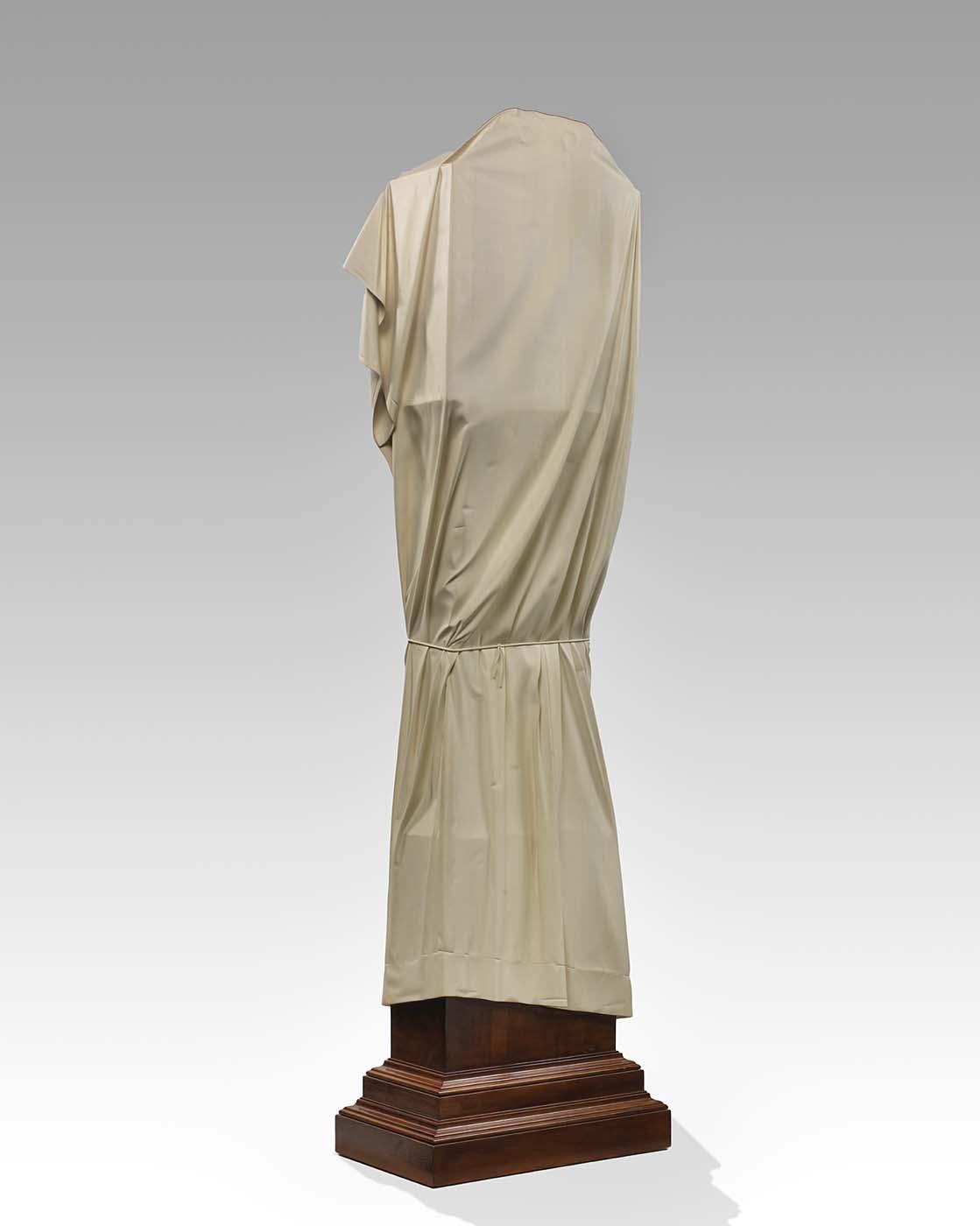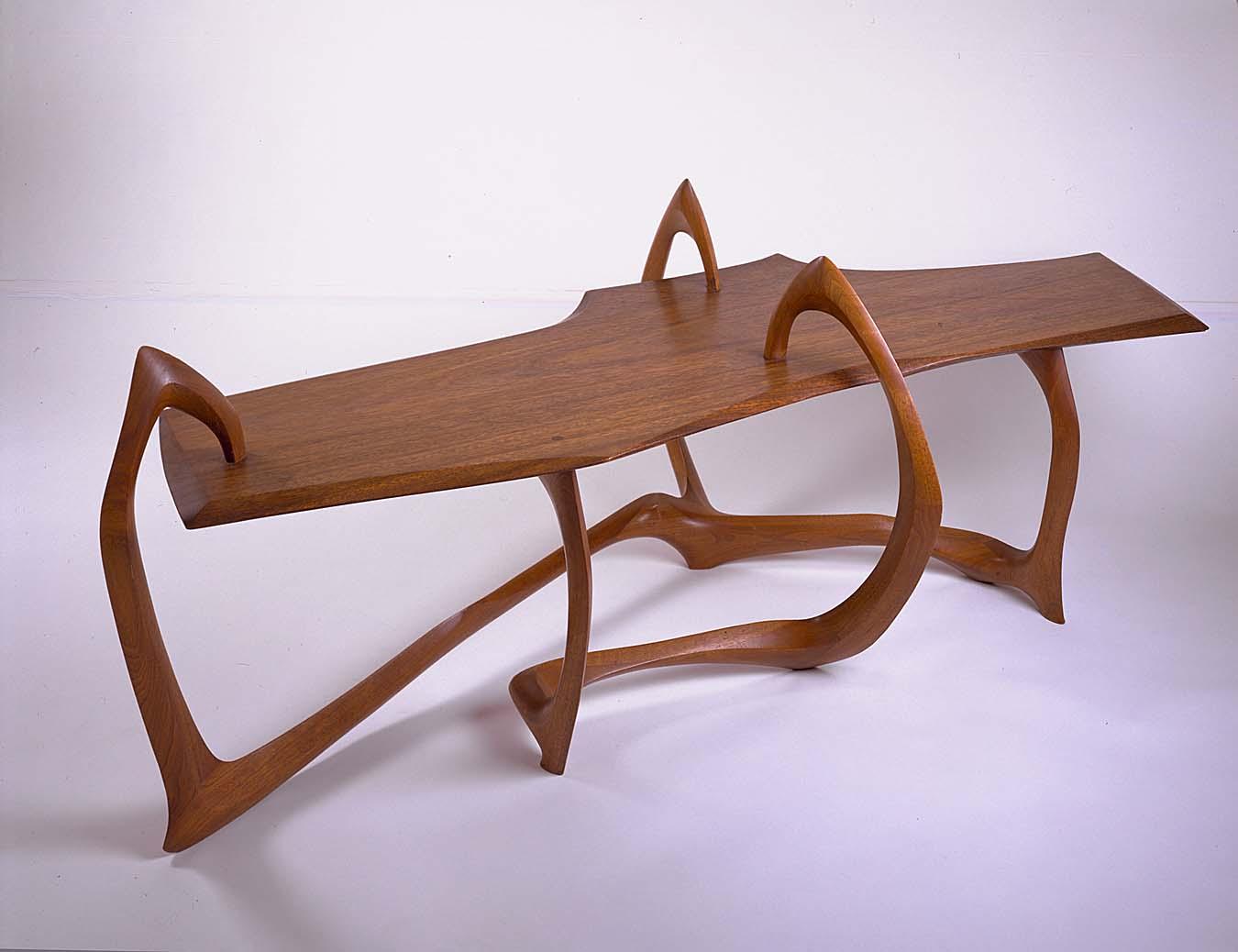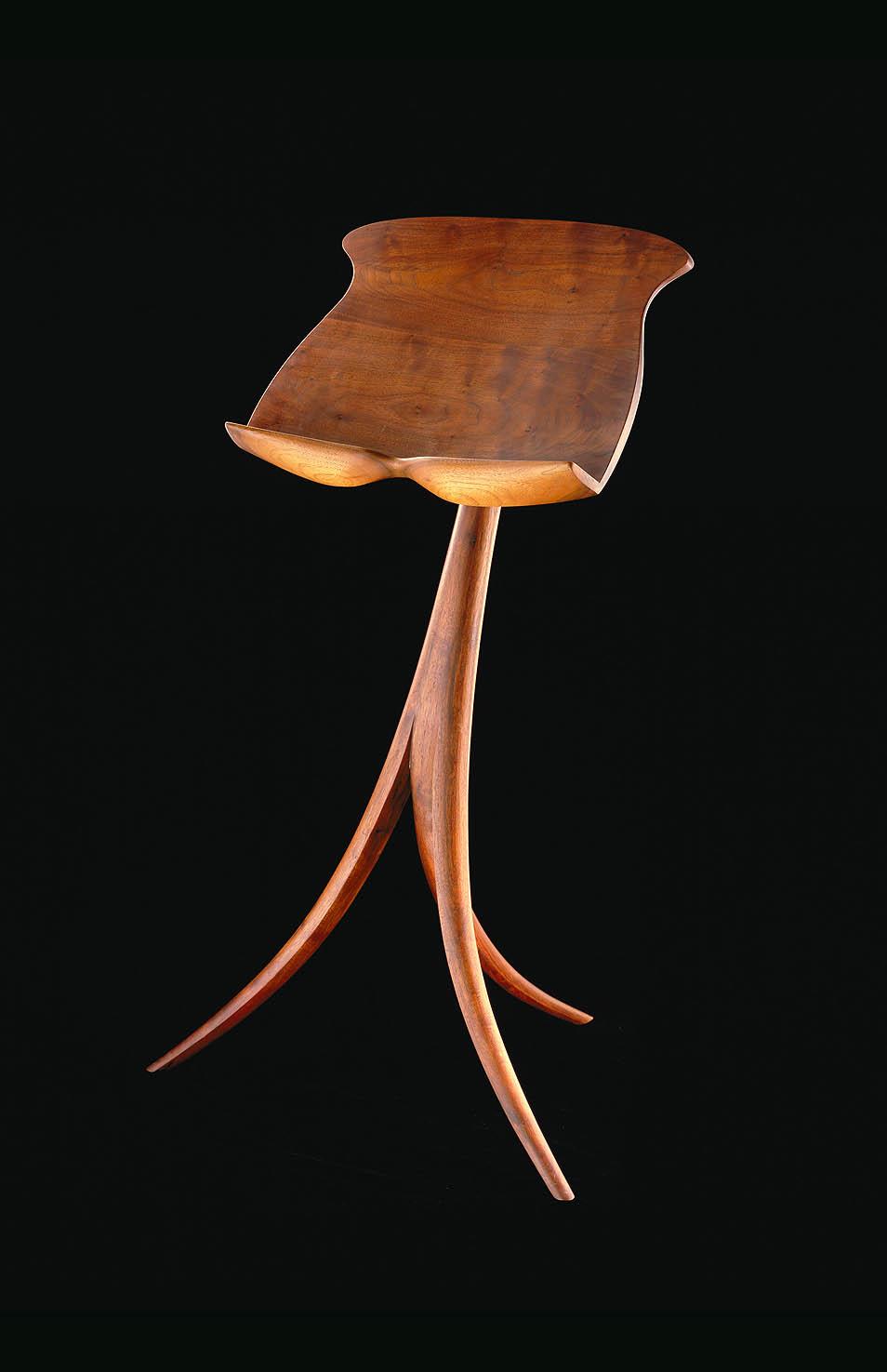His more traditional fine craft furniture, like his 1975 Music Stand, shows his incredible ability to take a standard form, and through his mastery of craft and unique vision, create biomorphic furniture that is at once functional and suggestive of a whole other world beyond our own. Unafraid to try new materials and techniques, Castle worked in cast plastics and recently added lighting elements to his sculptural works. Frequently, Castle used a technique called stack lamination, gluing many layers of wood together to forge large solid blocks that allowed him to carve on a larger scale.

Wendell Castle, Ghost Clock, 1985, bleached Honduras mahogany, Smithsonian American Art Museum, © 1985, Wendell Castle, Museum purchase through the Smithsonian Institution Collections Acquisition Program, 1989.68
Artist and craftsman Wendell Castle has died at the age of 85. Credited with being the father of the art furniture movement, Castle created a new genre, bridging sculpture and furniture seamlessly. His body of work is full of beautifully crafted, playful, organic furniture that remains functional while sparking the imagination.
His iconic Ghost Clock (1985), on display at the Renwick Gallery of American Craft, is a trompe l'oeil masterpiece. The bleached mahogany grandfather clock is so expertly carved that it continues to trick museum visitors today, who believe the clock is draped in cloth. Playfully teasing the viewer, not only is the clock shrouded, but it is shrouded in wood, and in fact there is no clock beneath the “cloth.” Castle wittily reminds us that man is helpless stop the passage of time.

Wendell Castle, Coffee Table, 1958, American walnut and padauk, Smithsonian American Art Museum, Gift of the Ruhe family in memory of Dr. Edward Lehman Ruhe, 1993.24

Wendell Castle, Music Stand, 1975, walnut, Smithsonian American Art Museum, Museum purchase, 1975.168
Exhibiting since the 1960’s, Castle had a full career, with many exhibitions and accolades to show for it. His work is found in museums the world over, and leaves a legacy of accomplishments in addition to his remarkable body of work. In the company of George Nakashima and Sam Maloof, Castle is regarded as a master craftsman and designer, whose work will continue to inspire, surprise and impress future generations.
A documentary about Wendell Castle is slated to be released this spring. Castle was represented by Friedman Benda, and more of his works can be viewed on their website.
























